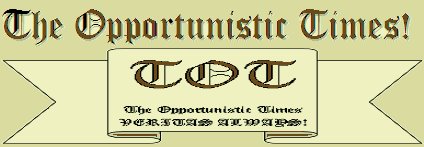For those of you who remember me from my Friday Club days, it would hardly be surprising that I’ve chosen to write something on ‘Kashmir’ for the first anniversary of this blog. However, there are pertinent reasons why I’ve chosen to re-visit this topic now.
Firstly, four assembly constituencies went to polls in the state of Jammu and Kashmir this Monday and the voter turn out has been the highest in more than a decade. While, one can not read anything extra-ordinary into the 72 per cent polling witnessed in Bhaderwah constituency in Jammu from where Shri Ghulam Nabi Azad has since won the election by securing nearly sixty-two thousand votes out of a total sixty-six thousand votes polled, this is not the case with the other three constituencies in Northern Kashmir. This time around Rafiabad has recorded 66.28 percent, Sangrama 40 per cent and Pattan 56.27 percent polling, as against the 2 per cent to 5 per cent polling that were recorded in 1989, 1996 and 1999! Incidentally, these are by-elections, and for the first time in the history of Jammu and Kashmir, the Chief Minister is not from the Kashmir valley.
Secondly, a day after these heavy turn outs were recorded, Daily Times, a Pakistani Newspaper, wrote an editorial openly admitting Pakistan’s ‘intervention’ in Kashmir and appreciating the change in Pakistan’s policy vis-à-vis Kashmir, while severely criticizing Syed Salahuddin, the Islamabad based leader of Hizbul Mujahideen. The lead writer almost suggests that Kashmir has hurt Pakistan’s interests more than anything else.
Now, don’t even imagine that people voted because terrorists had all gone home. The truth is that people voted despite the terrorists! As in the past, the polling in the Kashmir valley was indeed marred by separatist violence following the call given by the terrorists to boycott by-elections. A passer-by was killed and eight people were wounded in Srinagar when terrorists tossed a grenade at a passing vehicle of the CRPF. Terrorists hurled a grenade at a polling booth in Pattan while voting was in progress. Four people were wounded in the explosion in Palhallan village, forty kilometres from Srinagar. In another incident, terrorists hurled a powerful grenade at the Wagoora polling booth in Sangrama assembly constituency of Baramulla district. Earlier, on the eve of polling, terrorists had attacked five polling stations, lobbing powerful hand grenades at Pattan, Palhallan and at Kreeri, where it had injured one BSF trooper.
Of course, if you thought that separatist leaders would have finally read the writing on the wall, you are quite mistaken. “These elections do not weaken us” said Syed Ali Shah Geelani on Monday, “they were fought on small issues, and people tend to put aside the larger issues at such times, as pro-India politicians fooled people with promises of development, but our struggle is for freedom, not new drains.” For the moment, forget Geelani and his colleagues in the Hurriyat Conference. They are at least not denying that people voted, despite their call for boycott. Listen to what the Chief of the Jammu and Kashmir Mass Movement, Farida Behan Gee said on Wednesday: “The people of the valley have once again proved by boycotting the so-called sham elections that it holds no importance for them. India has been playing this drama of sham elections for the last six decades, but has never succeeded in breaking the firm resolve of Kashmiris for freedom struggle.” Would someone help Gee lift her head from beneath the sand?
But why are polling figures important? Perhaps, because some of us have been concerned about the Kashmiris’, like that of anyone else’s, right to self-determination. Many of us, deep within, are not sure if India is illegally occupying a territory by force. Perhaps, therefore it could then be said that it is this troubled consciousness that tries to draw solace from mundane figures like these! But should we actually be troubled? An examination of the historical facts proves beyond doubt the legitimacy of the accession of the state of Jammu and Kashmir to the Indian union.
No, I’m not going to get into the debate whether Maharaja Hari Singh signed the Instrument of Accession under duress or about the actual date of signing the Instrument of Accession or whether it was signed in the correct pro forma or not. I would want to refer to only a few undisputed facts. One, in 1947, there was definitely no clear preference for Pakistan among Kashmiris, whereas the dominant political party of the day, the Sher-i-Kashmir Sheikh Abdullah led Kashmir National Conference Party, supported by valley Muslims, clearly opposed Jinnah and Pakistan. History records that Jinnah was booed in Srinagar when he talked about his ‘two nation theory’. Two, by the time Yuvraj Karan Singh ascended the throne, the real power was with the people led by Sheikh Abdullah. When the Yuvraj nominated four members to India’s Constituent Assembly in June 1949, he acted not on his own, but on the advice of his council of ministers led by Sheikh Abdullah. Three, in August, 1951, the Constituent Assembly of Jammu and Kashmir was formed by the Yuvraj with members directly elected by the people of Jammu and Kashmir, on the basis of universal adult suffrage. This 75 member Constituent Assembly, on the 15th of February, 1954, voted 64 to 0, with 11 abstentions to ratify the Instrument of Accession signed by Maharaja Hari Singh in 1947. Four, the Constitution of Jammu and Kashmir, which this democratically elected Constituent Assembly had framed, came into force on the 17th of November, 1957. Of the 158 sections of the Constitution of Jammu and Kashmir, section 3 says that ‘the State of Jammu and Kashmir is and shall be an integral part of the Union of India’ and section 147 makes section 3 non-amendable! Five, the polling figures in Lok Sabha elections from Jammu and Kashmir until 1984 shows figures comparable to any other part of the Union of India. This to me shows that until the mid-Eighties, there were no doubts in the minds of the average Kashmiri regarding Kashmir’s accession to the Indian Union!
The only question that is then worth asking in this regard is why the course of history started changing from 1986 onwards. Again, let me not talk about contested facts. What is undisputed is that in 1986, the secular fabric of Kashmiri society began to rupture and the ethnic cleansing of Kashmiri Pandits, first from Anantnag and then from the entire valley began. Terrorism began to raise its ugly head in the valley and peace became a long forgotten dream. But how come thirty odd years after the question of accession was settled by the people of Kashmir, these violent eruptions began from nowhere? Perhaps, the Daily Times Editorial gives you a hint. I quote: “Pakistan put everything at stake in 1990s when the insurgency in Kashmir started. It diverted a stream of “mujahideen” volunteers from a successful Afghan war to Kashmir and by the mid-1990s had created a situation in Kashmir that made the world wake up and take note of the Kashmir issue.”
That brings us back to our discussion on the polling figures in Monday’s by-elections. Let me take Geelani’s words at face value and assume that people voted because they are concerned about development. In which case, isn’t it that they actually believe that their elected representative(s) can actually make a difference in their lives, like in any other free democracy? In fact, the hope placed in the system should be much more there for people to defy threats to life and make it to the polling station, especially when the by-elections, except in Bhaderwah, wouldn’t have changed anything about the government.
Geelani and others in the Hurriyat always talk about tri-partite talks on Kashmir, between India, Pakistan and the Kashmiris. Technically speaking, does Pakistan have locus standi on this issue, except for the fact that Pakistan is an Islamic state and about 70 per cent or so of the people of Jammu and Kashmir are also Muslims? That leaves us with India and Kashmir. India has democratically elected representatives and so too do people of the state of Jammu and Kashmir, except for those from parts under the occupation of Pakistani forces. Ghulam Nabi Azad, the elected Chief Minister of Jammu and Kashmir should be talking regularly to the leadership in Delhi. That I’m sure, they would have been doing even if Geelani or anyone else had not asked them to do so.
Pakistan’s ISI convinced successive leadership in Islamabad that if Soviet Union, then a super power, couldn’t stay in Afghanistan, it was only a matter of time that ‘mujahideen’ would ‘evict’ India also from Kashmir! Somewhere down the lane, that power of conviction seems to be coming down. Perhaps, there is an increasing realization that unlike the Soviets, Indians are defending their own territory and that any perceived support for Pakistan on the ground was over-estimated to say the least.
Since one of the oft-cited solutions to the Kashmir question is making the Line of Control (LoC) as the international border, we need to take a re-look at the LoC. If Pakistan has no legitimate claims over the state of Jammu and Kashmir, then technically, Pakistani occupation of nearly one third of the state is illegal and by force. However, what is interesting is that whether intentionally or not, the Line of Control had divided the state of Jammu and Kashmir on socio-political and ideological lines! To quote Bharat Kanrad, “the more assertively Islamic parts populated by the Mirpuri Muslims fell on the Paksitani side, there to join up with the ‘Northern Areas’… (where) the Muslim Conference Party had strong support in pre-partition politics”. The parts on the Indian-side consisted of Budhist-dominated Ladakh region, Hindu dominated Jammu region, and Muslim dominated Srinagar valley, where it was the pro-India, relatively more secular, National Conference Party that had ground support. As Kanrad points out, this division left India and Pakistan retaining the portions of the state that were ethnically and culturally in sync with them.
The last two decades of militancy was meant to change the ideological and ethnic character of Srinagar valley, which would have in turn tilted the overall balance towards Pakistan. Fundamentally, India and Pakistan represented and continues to represent two contrasting ideologies: One, inclusive and open, the other, exclusive and closed. Srinagar valley and the Sher-i-Kashmir had clearly chosen India and its ideology fifty odd years before. Even as late as on 11th of February, 1975, Sheikh Abdullah had written to the then Prime Minister of India: “The accession of the state of Jammu and Kashmir is not a matter in issue. It has been my firm belief that the future of Jammu and Kashmir lies with India because of the common ideal that we share." Defying the threat to their lives, people in the Kashmir valley have reiterated that once again… just this week!
P.S. Former Yuvraj, later Sadar-i-Riyasat and Governor of Jammu and Kashmir, Karan Singh was in news recently as Prime Minister Manmohan Singh had sent him to Nepal as a special envoy. May be we would see more of him in future. He is definitely one of the probable candidates for the next rounds of Presidential and Vice-Presidential elections!







